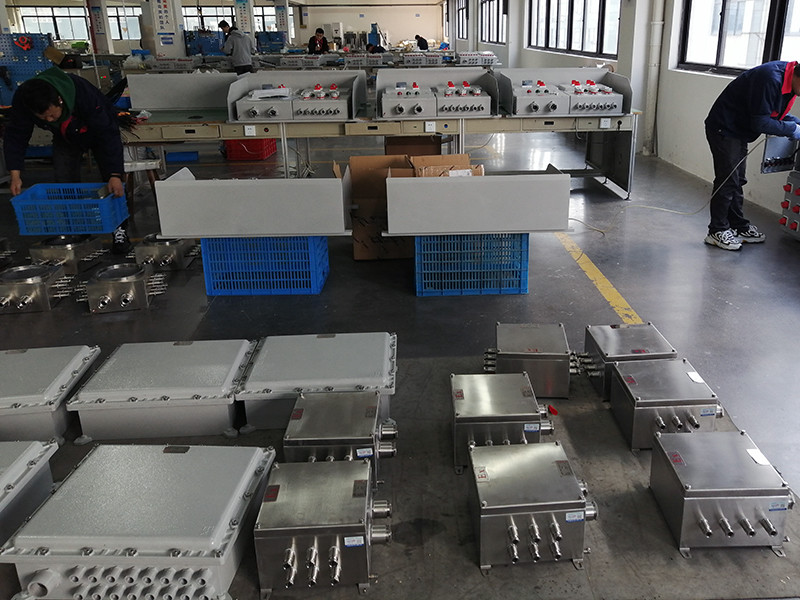Explosion-proof enclosures come in various types, each suited to different usage areas. Let’s explore the differences in functionality between explosion-proof junction boxes and explosion-proof distribution boxes.

Functionality
Explosion-Proof Junction Boxes: As the name suggests, these are transition boxes for wiring. They are primarily used for line transitional bridging, jumping, or crossover wiring. These boxes mainly house various specifications and quantities of terminal connectors.
Explosion-Proof Distribution Boxes: These are primarily responsible for electrical distribution in hazardous areas and for controlling equipment. They handle the distribution of electrical energy, offering protection to lines and electrical appliances. Inside, they are equipped with terminals and other components, including essential elements like circuit breakers and fuses, distributing incoming power.
Size
Visually, typical explosion-proof junction boxes have a simplistic exterior, with hardly any openings on the panel, except for reserved holes for inlet and outlet wires. Custom styles may vary. Generally, they are smaller than distribution boxes and require interior installation based on schematics for primary and secondary circuit distribution. They also contain accompanying components such as AC contactors, relays, and circuit breakers, thus being larger in size.
Moreover, size variations depend on the number of components inside a junction box, which are usually compact, while distribution boxes vary significantly in size based on wiring diagrams and control circuits. Some distribution boxes can be cabinet-style, making identification beyond visual inspection or direct examination of internal configurations more intuitive.
Price
With the same manufacturing process and materials, price factors include the box’s volume, panel layout, number and size of inlets and outlets, internal configuration, and brand of internal components. Material-wise, aluminum alloy boxes are the most affordable, steel boxes are moderately priced, and stainless steel boxes are relatively more expensive. However, each material serves different purposes: aluminum alloy has size limitations, steel is suitable for non-standard sizes, and stainless steel excels in corrosion resistance, thus commanding a higher price.
 Shenhai Explosion-Proof
Shenhai Explosion-Proof
